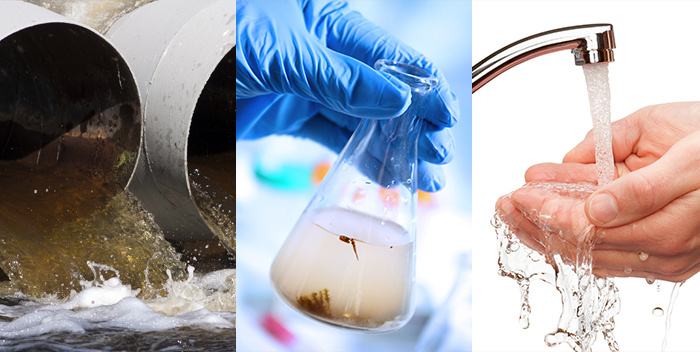Vacuum evaporation
Vacuum evaporation
Physical Principle
If we lower the system´s pressure up to vacuum conditions (33 mbares), we reduce boiling temperature of the watery sample we want to evaporate.
Thanks to this physical principle, the calories used in the evaporation process and the ones eliminated in the condensation process are going to be a lot less than the necessary at atmospheric pressure.
Global Functioning
As the system works in vacuum, it automatically sucks the contaminated water to be evaporated. Inside the boiler is where the water receives heat from the lower exchanger (where a hot fluid goes through at a high pressure). The vapors generated in this exchange, reach the upper part of the boiler, where they give heat to a second exchanger (where a cold fluid goes through at a low pressure) and condensate as clean water.
Vacuum evaporation separates the contamination of the water with the help of thermal energy.
That´s why from initial contaminated water, we will obtain two different currents:
Distill: Evaporated and condensed water. This is the clean water current and it represents more than the 95% of treated water. It’s a colorless, completely transparent water, with a very low electric conductivity (absence of salts) and without solids in suspension.
In general, it can be poured according to the law or can be reuse in industrial processes.
The only contaminants that can contain are volatile compounds that have a boiling point lower than water bolting point, all substances with a higher boiling point will remain in the concentrate.
Concentrate: It is the mud current where all the contamination is accumulated.
Depending on the evaporator model, we could achieve a higher degree of concentration up to dry waste with the DRY model.
When the aim of the evaporation is to minimize waste, this current has to be sent to an external waste manager. Sometimes is interesting to eliminate all the water from the waste so that its qualification as inert makes its management cheaper.
This system has different purposes but we can highlight two general applications:
- Wastewater concentration: With the purpose of minimizing 100% of the waste produce in an industrial process.
- Raw materials recuperation: Increasing the concentration of a valuable raw material in the dissolution. This way, water consider as waste can turn into the subproduct of a process.
